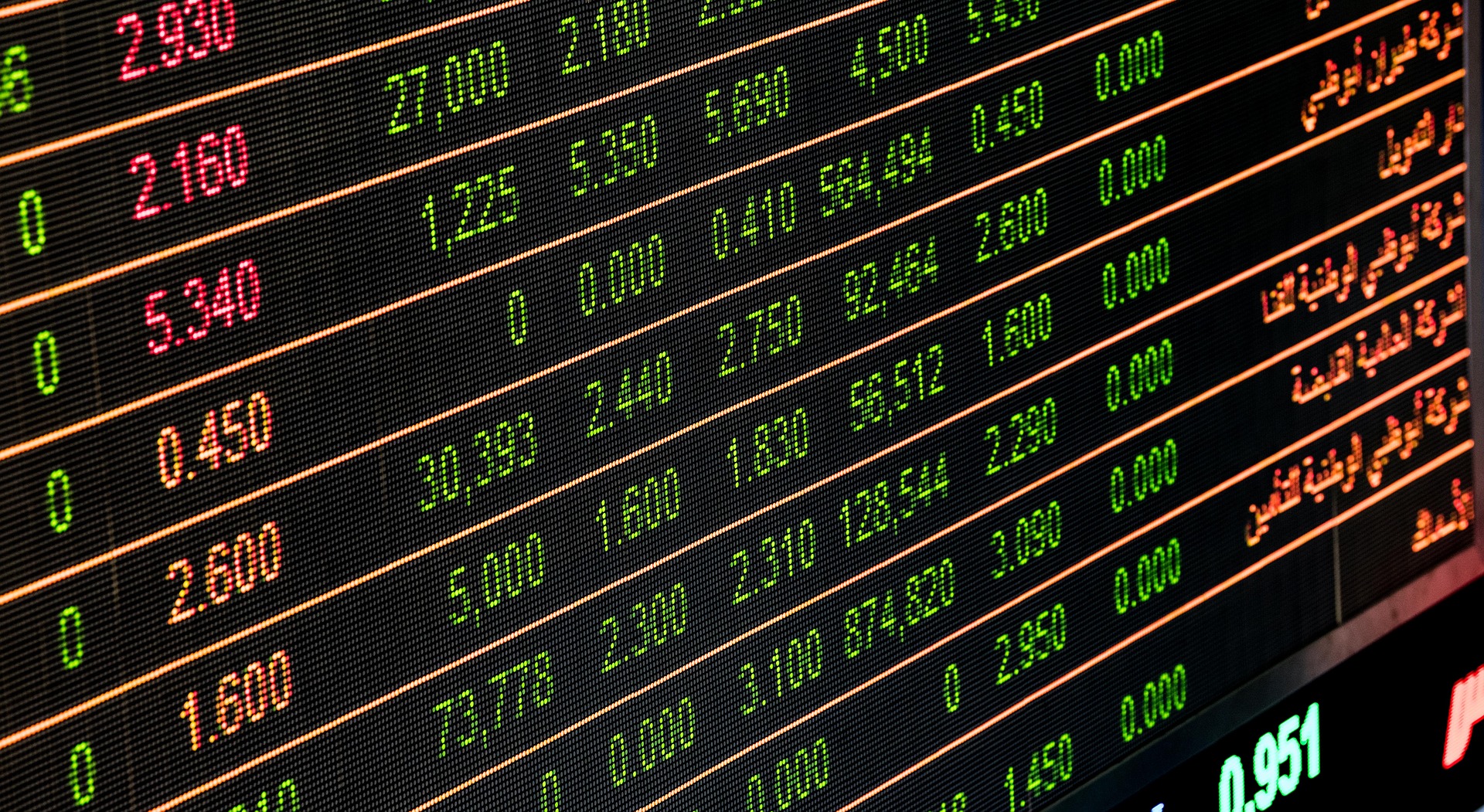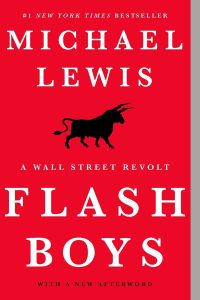Is The Stock Market Rigged? The Truth Exposed
Years ago, I watched a documentary about how sites like SeatGeek and StubHub can acquire so many tickets to events BEFORE the general public.
This was right around the time of the Superbowl so I decided to see it in action for myself.
I logged in shortly after tickets went on sale and wouldn’t you know, over 75% of the tickets were already taken.
How does that happen?
It seems these types of sites use technology that isn’t available to the little guy out there.
So, this got me thinking about the stock market as most of our investments (at that time) were in mutual funds.
Are there groups that can buy and sell stocks and other securities extremely fast to make a profit that small investors aren’t able to?
This piqued my curiosity and caused me to rapidly enter the rabbit hole that many others have traveled down too.
Here’s what I found…
Don’t Miss Any Updates. Each week I’ll send you advice on how to reach financial independence with passive income from real estate.
Sign up for my newsletterIs The Stock Market Rigged?
When you hear the word “rigged” what comes to mind?
A Las Vegas casino where the odds are always stacked in their favor?
What about the guy at a carnival booth trying to get you to play “his game” to win a stuffed animal?
How about powerful government officials who can use their influence to sway legislation toward their economic benefit?
These are some of the images I think of when I hear the word “rigged”.
According to a Bankrate survey 56% of people who invest in the stock market believe it’s rigged. Why do they think that?
Let’s find out….
#1. Insider trading (information)
Information is power.
And when it comes to buying and selling stocks, information is everything. The key to deciding when to trade a stock is all about knowing the health of that company or business.
When I was actively investing in the market (mainly index funds), I was under the impression that companies give out its financial information to everyone at the same time via their quarterly earnings reports.
By knowing how well a company is doing (financially), we the small-time retail investors should have the same chance to make investment decisions based on the same information.
But it appears that any information you receive through these quarterly reports have ALREADY been acted on by professional asset managers and super computers before we can even log into our financial apps.
In essence, many people already have the access to the information way before you do. It’s called insider information and it’s an unfair advantage to everyday investors.
Insider trading is trading stock based on nonpublic information. Even though it’s illegal, it happens all the time.
For example, let’s say that an executive at a company plans to make a large acquisition. Guess what? If that information is NOT public, it would count as inside information. If that executive tells his friend about it who then buys or sells a financial asset using that information, it becomes illegal.
It seems that corporate elites, big wall street firms, consultants, and government politicians have profited handsomely on information that’s not available to most Americans today.
If you’re convicted for insider trades (which is rare), you could spend a few months to over a decade behind bars.
In 1934, the United States Congress passed the Securities Exchange Act which made insider trading illegal. This happened shortly after one of the worst declines in US stock market history.
From Black Monday 1929 through the summer of 1932, the stock market lost 89% of its value. The act was meant to prevent many financial abuses from recurring, including insider trading.
Do you remember Oliver Stone’s movie, Wall Street, released in 1987? It featured a ruthless banker (Gordon Gekko) who made millions of dollars by trading on inside information on several companies.
“The most valuable commodity I know of is information.” – Gordon Gekko
By the end of the film, he was convicted of insider trading and sent to jail.
#2. Unequal access to information
Individual investors access to public information, the opportunity of that information, and expertise in analyzing that information make a real difference, right? No so fast.
Many feel that stock trades are a zero-sum game where one person wins and the other loses. When you’re investing in the market, you’re also trading alongside a BIG group of professional investors and institutional investors such as:
- hedge funds
- insurance companies
Their ONLY focus is on winning, no matter what. These groups have access to information and research about financial markets that you and I can’t afford. They have teams of people working countless hours to analyze information utilizing complex computer algorithms that execute buy-sell decisions in real-time.
I understand there are day traders that do well for themselves but still operate at a disadvantage from the unequal access of information and analysis at the disposal of the institutional investor.
#3. Access to capital
Unequal access of information isn’t the only advantage that institutional investors have over you and me. They also have access to lots of money.
They’re able to source large sums of capital from multiple sources for their investment purposes. The smaller, individual investor is limited.
Do you have millions of dollars at your disposal to invest? Most don’t.
This access to capital allows the institutional investors advantages such as
- lower fees
- lower commissions
They typically can acquire this via block trades.
Speaking of block trades, that leads us to our fourth reason…
#4. Block trades
Block trades are large transactions of securities like shares of:
- individual stocks
- options contracts
- bonds
They are typically carried out by institutional investors and refer to trades of at least 10,000 shares or $200,000 but are usually much larger in scale.
They provide a discount to an exchange’s market price that’s not typically available to the average individual investor.
Are you starting to see a pattern here?
#5. Dark pools
Just when you thought it couldn’t get any more advantageous for institutional investors, enter dark pool trading.
This alternative trading system allows institutional investors to avoid stock exchanges and make block trades in private (the public does NOT know about them).
In the public financial exchange markets, there’s a high degree of regulation and media attention whereas there’s none with dark pools.
Why is this important?
Private exchanges give institutional investors the advantage of both:
- lower fees
- secrecy
This lack of transparency helps maintain share price stability as large public transactions can affect the price of a stock. This helps them avoid selling when prices are dropping as well as buying while prices are increasing.
For the average investor, these heavily discounted fees and secretive trading opportunities that buffer against price fluctuations aren’t available.
Sounds fair, right?
#6. Corporate buybacks
In 1982, the SEC instituted Rule 10B-18 which was intended to help create a way for a company’s board of directors to authorize the repurchase of a certain number of the company’s stock.
In essence, it legalized stock market manipulation by allowing companies to buy back their shares on the open market.
The market price of a company’s stock may determine the price of a future acquisition or the price of additional shares and serves as an indicator of the health and performance of the company.
Therefore, a company may have an incentive to manipulate the price of its common stock.
So instead of investing any profits, companies can opt to buy back large quantities of stock and artificially raise their price.
To the average investor, an increase in the price of a stock typically signals a healthy growing company. Unfortunately, it can also be an illusion.
Corporate buybacks coupled with reductions in shares can benefit the individual investor. But when it occurs without a share reduction, it’s only beneficial to the top corporate executives locking in their profits.
As you can imagine, 2021 (post pandemic) set a record for the number of corporate buybacks performed ($881.7 billion in stock buybacks). That’s up from $519.8 billion in 2020.
Some analysts estimate that corporate buybacks (and not actual profit growth) are responsible for 40% of the market’s growth over the last decade.
Does it seem fair that if you’re a big corporation, you’re able to manipulate the price of a stock?
Now I’ve saved the best for last.
#7. High-frequency trading
Ahhh, high frequency trading (HFT). What is it and how is it used?
It’s important to understand when someone refers to trading on the “stock market”, it encompasses trades taking placed on multiple exchanges.
Examples include:
- New York Stock Exchange (NYSE) – world’s largest
- NASDAQ
- American Stock Exchange (AMEX)
A single stock can experience price inconsistencies across multiple exchanges which are profit opportunities for high-frequency traders.
According to Michael Lewis, author of “Flash Boys: A Wall Street Revolt“, the U.S. stock market is rigged in favor of high-speed electronic trading firms, which use their advantages to extract billions from investors.
You may recognize some of Lewis’s other books such as The Blind Side, Moneyball, and The Big Short.
High-frequency trading is when powerful computers with very fast connection speeds execute large transactions in a fraction of a second. It’s used by many banks and trading firms to send tons of orders into the market and executing a small portion of them when opportunities arise to capitalize on price imbalances.
Basically, they monitor the various exchanges looking for price discrepancies.
These HFT computers can quickly recognize the difference and simultaneously buy at the lower price while selling at the higher one.
Sounds like a money-making machine, right?
The HFT technology and trading methods are all legal. These HFT firms are utilizing their speed advantage to profit at the expense of other market participants to the tune of tens of billions of dollars.
For example, a stock might be trading for $9.25 on one exchange and $9.30 on another. Due to the efficiency of the market, an anomaly like that might only last for seconds before pricing equalizes across all exchanges.
Groups using HFT are able to identify your desire to buy a specific stock (i.e. Apple). Next, they purchase shares ahead of you and turn around and sell them back to you at a higher price.
Lewis states this speed advantage the faster traders have is milliseconds, some of it is fractions of milliseconds. Doesn’t take much time to make BIG money.
In the book, Lewis tells a story about a hedge fund manager running a fund worth $9 billion. He figured that the inability to make trades the market said they should be able to make was costing them $300 million a year. And that was $300 million a year in someone else’s pocket.
Those milliseconds can be valuable, making it possible to send around 10,000 orders in the blink of an eye.
To sum it Lewis’s book he feels that it’s the stock exchanges, big Wall Street banks, and high-frequency traders that are rigging the market.
What do you think?
It seems that the bigger players in the market have an advantage over the little guys or amateur investors.
Where To Invest If NOT The Stock Market?
If you’re not happy with your path to “retirement” then it’s time to do something about it. Nobody wants to see you succeed financially more than…YOU! If you want to continue down the “accumulation” model leaving you little to no options until you’re 70 then the stock market is your solution.
But if you want diversification and additional income streams OUTSIDE the market then consider allocating a percentage into real estate.
My go to investment for someone that’s too busy to manage tenants is real estate syndications.
If you’re not familiar with them, check out the video below:






